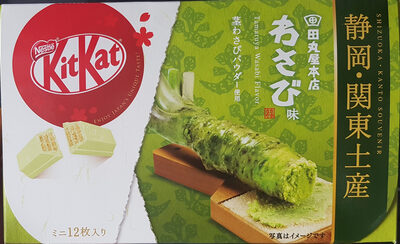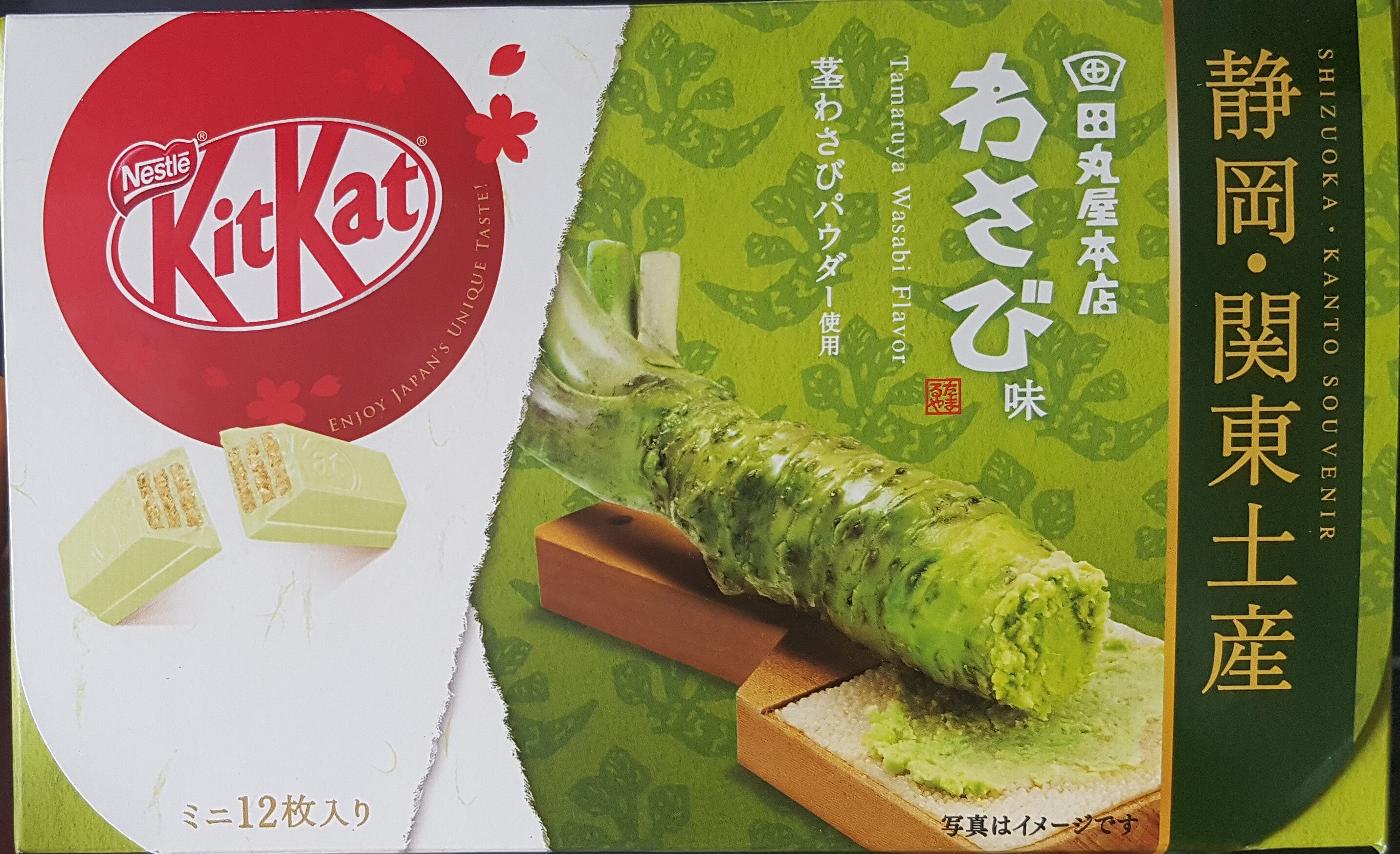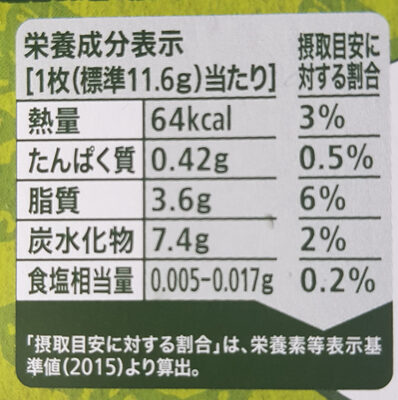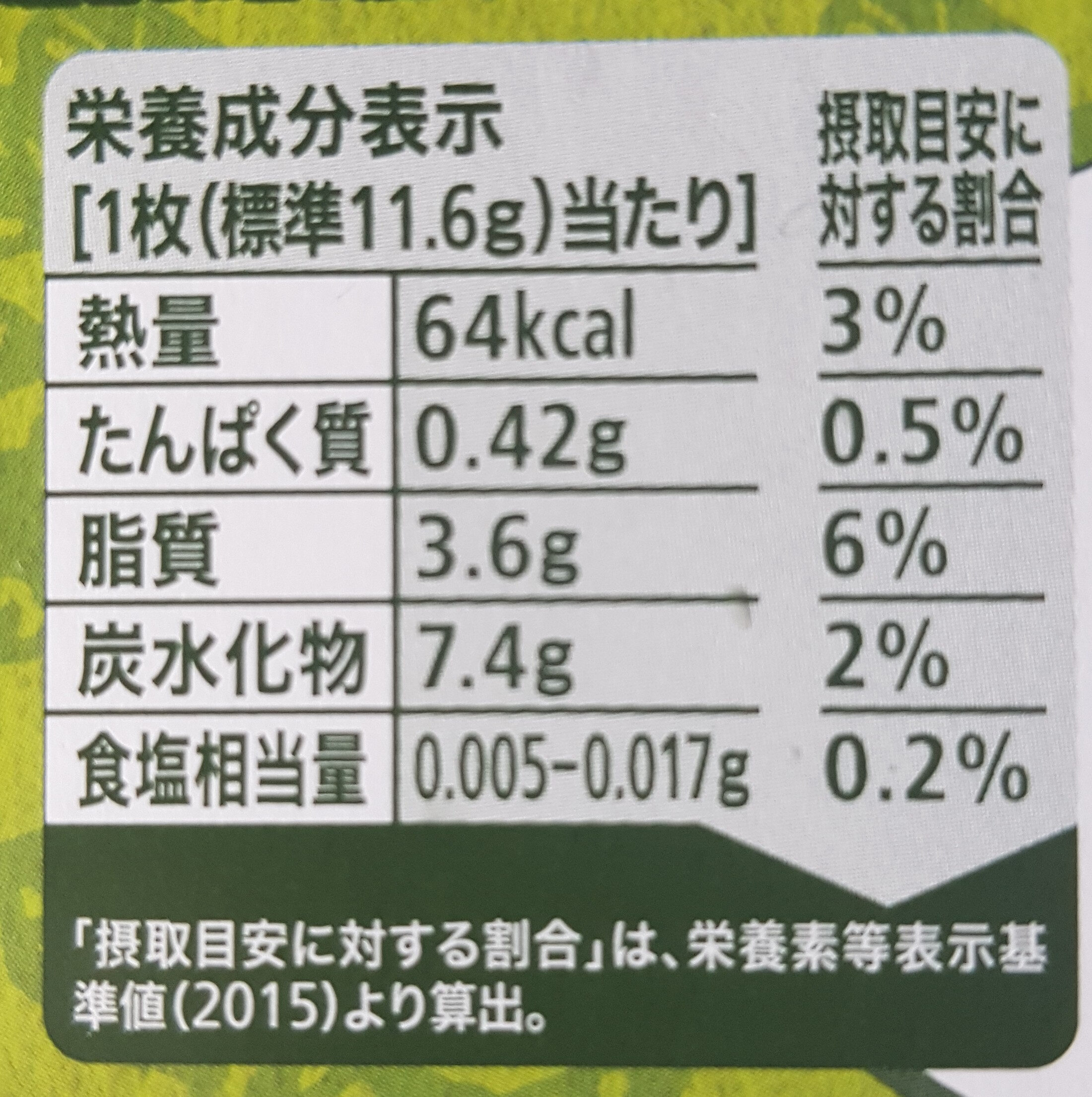Japanese Kit Kat Tamaruya Wasabi - Nestlé
この商品ページは完成していません。既存の写真からデータを編集または追加したり、 Android または iPhone/iPad のアプリを使用して写真を撮影して、手伝ってください。ありがとうございます!
×
バーコード: 4902201160476 (EAN / EAN-13)
パッケージング: en:Box, en:Cardboard
カテゴリー: en:Snacks, en:Sweet snacks, en:Cocoa and its products, en:Confectioneries, en:Bars, en:Chocolate candies, en:bars-covered-with-chocolate, en:Chocolate biscuity bars, fr:Barre chocolatée biscuitée type KitKat
ラベル、認証、表彰: en:Nestlé Cocoa Plan
好みに合わせて
環境
カーボンフットプリント
パッケージング
輸送
Report a problem
情報元
製品に追加 によって panieravide
最後に編集した製品ページ によって packbot.
製品ページの共同編集者 kiliweb, mylabelcontributors, openfoodfacts-contributors, teolemon, versgui, yuka.YVB3WkVwaFluOWtQa2NGdm9pUGUyZXRMNVlLSUJWbnRDTTA5SVE9PQ.
データが不完全または間違っている場合は、完了するか、このページを編集して、それを修正することができます。









